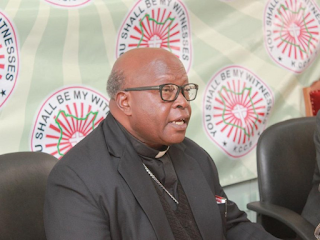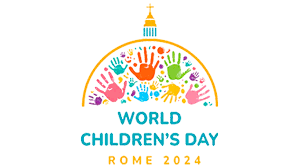KENYA: His footprints will be felt largely in education: Tribute to Archbishop Emeritus Zacchaeus Okoth

Most Rev. Zacchaeus Okoth, Archbishop Emeritus of Kisumu
Most Rev Zacchaeus Okoth, Archbishop Emeritus of Kisumu was ordained priest of Kisumu in 1968 and became bishop elect in February 1978, and on April of the same year he was consecrated bishop. Twelve years later, he was appointed archbishop.
His footprints will be felt largely in education, having initiated projects that saw him pioneer dozens of schools, some named after him such as Bishop Okoth Girls School – Mbaga in Siaya county; Bishop Okoth Ojolla Secondary School in Kisumu and Bishop Okoth Miranga in Seme Sub-county.
Other schools include St Mary’s Lwak Girls, St Francis Rang’ala Girls, St Oda Aluor Girls, as well as schools for students with special needs. The Catholic Archdiocese is feted for supporting girl-child education, thanks to Most Reverend Okoth, the Archbishop Emeritus. Some of its schools have a long history of exemplary performance in national exams.
Archbishop Emeritus Okoth also started Uzima University, which is his brainchild. The University is yet to receive a charter which would allow its expansion in order to attract more medical students.
On health, the Catholic Archdiocese is feted for its role in the management of HIV-Aids.
The foundations of the Archdiocese of Kisumu dates back to 1903 with the arrival of the First Mill Hill missionaries in Western Kenya. The Diocese of Kisumu assumed its administrative status on July 17, 1925 with the erection of the Vicariate of the Upper Nile which covered Eastern Uganda, which later became a Prefecture Apostolic of Kavirondo on May 27, 1932 and Vicariate Apostolic of Kisumu on May 25, 1953. On June 9, 1953 the Diocese of Kisumu was formally created, covering an expansive area including parts Nakuru and Ngong dioceses.
The Diocese of Kisumu was elevated to a Metropolitan see on May 21,1990. Since then, the Archdiocese has witnessed tremendous growth in terms of faith and other social developments within and in its seven Suffragan Dioceses, which include Bungoma, Eldoret, Homa Bay, Kakamega, Kisii, Kitale and Lodwar.
Currently in the whole Metropolis there are about 2,649 primary schools, 700 secondary schools, 40 middle level colleges, polytechnics and other institutions sponsored by the Church. These institutions are currently offering artesian courses. The Metropolitan See also has approximately 320 hospitals and dispensaries serving its population which is about 18 million people.
The See of Kisumu itself hosts a larger share of these institutions. Currently there are 250 secondary schools, 1,020 primary schools, 53 hospitals and dispensaries, 15 polytechnics, 20 Special Education centres including small homes for the disabled.
Archbishop Okoth and Kenyan politics
Due to his wise counsel to politicians, Archbishop Okoth earned a seat at the 14-member Building Bridges to Unity Advisory Task Force, which is handling the nine-point peace agenda of the March 9, 2018 handshake of President Uhuru Kenyatta and Opposition Leader Raila Odinga. The agenda includes addressing ethnic antagonism and competition; lack of national ethos; inclusivity; devolution; safety; security and fight against corruption.
His inclusion in the Unity Advisory Task Force team was likely driven by his campaign for peace during the national Prayer Day on October 6, 2017 at the Village of Mary National Shrine in Subukia, Nakuru County, which was attended by President Uhuru Kenyatta.
While thanking Archbishop for his homily on peace, President Kenyatta assured him that he would do whatever is possible under his powers to ensure the repeat presidential election scheduled for October 26, 2017 was peaceful, fair and transparent so that Kenyans get a second chance to elect the leader of their choice. The theme of the Eucharistic Celebrations was “Peace in the family, peace in our country and hope in our youth.”
In his message, Archbishop Okoth said that Kenya needs peace to propel its development agenda. “The youth need peace and security so that they acquire quality education and become responsible citizens,” Archbishop Okoth said during his homily.
He urged the opposition leader Raila Odinga and President Uhuru Kenyatta to strive to resolve the electoral stalemate that had emerged following the disputed election.
On Friday September 8, 2018 Hon. Raila Odinga made it public that he had reached out to Archbishop Okoth to be part of the initiative because of his love for peace and justice. “Archbishop Okoth has played a major role in building the society. He has touched many lives and many people look up to him in the society, so he was the first person I reached out to when we agreed to dialogue,” Mr Odinga said in a statement.
History of the Archdiocese of Kisumu
The Mill Hill Missionaries arrived in Uganda in 1895, having travelled to Mombasa by ship. They were received by Kabaka Mwanga II into his court and were given land at Nsambya Hill. From there, they spread their evangelizing mission to Kisumu in 1903, covering the greater Western part of Kenya and the entire North Rift Valley up to Nakuru.
On July 25, 1925, the area covering Nyanza, Western, and North Rift Region) was established as an Apostolic Prefecture of Kavirondo, still under the Apostolic Vicariate of Upper Nile in Uganda. It was put under its first Bishop Gorgonius Brandsman.
In 1932, it was elevated to the level of Apostolic Vicariate of Kisumu. In 1953, the Apostolic Prefecture of Eldoret was created and at the same time, the Apostolic Vicariate of Kisumu was elevated to Diocese. In 1960, Kisumu was once again split when Kisii Diocese was created. In 1978, Fr. Zacchaeus Okoth was consecrated Bishop of Kisumu. In 1990, the Metropolitan Archdiocese of Kisumu was created with Archbishop Zacchaeus Okoth as the first archbishop. As of 2016 statistics, the Archdiocese have 42 parishes.
∽End∽
By Fr Joachim Omolo Ouko, AJ


